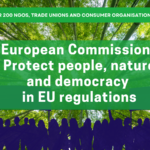Devastating wildfires and floods are making real what scientists have warned of for decades – we’re running out of time to avoid climate breakdown and the chaos that would bring. Immediate action to renew our energy system in the next few years is crucial if we are to achieve the Paris Agreement’s objective to limit global temperature rise to 1.5°C and prevent dangerous climate change.
We have never been better placed to rapidly end the fossil fuel era and build a fully sustainable energy system. A stable climate and a brighter future for our children top a long list of benefits, ranging from cleaner air and water, abundant affordable energy, true energy security and a lifeline to the natural world. We can achieve a 100% renewable energy system by 2040 and the transition is underway. Wind and solar will do the heaviest lifting in that transition. Here are four reasons why.
-
Only renewable energy builds a zero-emission energy system
The only zero emission energy technologies ready to be rolled out at the pace and scale needed to avert catastrophic climate change are renewables. It is that simple. Solar panels, wind turbines, electric heat pumps and geothermal energy are mature and mass produced. Efficient and affordable, renewable energy technologies can be deployed extremely quickly in any country and meet all energy demands, be it for buildings, industry or transport, either directly or by the indirect use of renewable electricity based on renewable hydrogen.
Other technologies and energy sources are portrayed as climate-friendly. This is false. Fossil gas is a fossil fuel that further drives dangerous climate change. Carbon capture and storage has been talked about for decades but remains unproven and unready. Nuclear power is not a viable option either. Nuclear plants are a white elephant: achingly slow to build, so eye-wateringly expensive, and they are as risky as their dangerous radioactive waste .Even if security risks and high investment costs for this technology were to be reduced, it would be extremely unrealistic to expect nuclear power to grow at the same pace as renewables or to deliver anything other than emissions (during construction).
-
Cheap energy and comes with many benefits for society
The sun and wind come for free. Renewables deliver extremely cheap energy, helping to alleviate energy poverty and giving economies a powerful competitive advantage over those dependent on fossil fuels. Zero fuel costs is one reason why solar and wind are already the cheapest technologies for producing electricity in almost all areas of Europe. Installation costs are set to fall further as renewables benefit from growing economies of scale and as fossil fuel subsidies are cut.
Besides direct energy cost savings, stopping the burning of fossil fuels will help clean our air and water, delivering huge health system savings and preventing roughly 600,000 premature deaths from air pollution per year. The costs of climate chaos are becoming more and more obvious, as floods and wildfires wreak havoc on lives and economies. Stabilising the climate would prevent annual welfare losses that could run to €175 billion in the EU. The truth is, we simply cannot afford the high price of fossil fuels. And with an end to the pandemic in sight, Covid recovery funds present an unmissable opportunity to step the transition to renewable energy up a gear.
-
True energy security is found close to home
The EU currently spends over €300 billion a year importing 60 percent of its energy as fossil fuels. Yet wind could generate around four times more energy than we currently use, and solar at least 30 times more. Harvesting our own domestic renewable energy would keep vast sums of money circulating close to home, enriching local communities. It would bring an end to price volatility and shocks, which lead to steadily increasing home energy bills and energy poverty. It would also mean we are no longer beholden to fossil fuel states with a shaky belief in the rule of law and democratic values. It would prevent further instances of energy supply shocks that leave Europeans in the cold.
Better connected energy grids, sophisticated weather forecasts and a broad range of flexibility solutions, such as storage technologies and demand flexibility from domestic and industrial consumers, mean that the supply of variable solar and wind power is perfectly manageable. Their costs are easy to forecast because they mainly occur just once, at installation. A decentralised renewable system boosts security of supply by avoiding dependence on centralised plants. Climate change puts fossil and nuclear power production more and more under pressure: during the summer, their turbines have to stop due to a lack of cooling water. Damages from extreme weather menace the stability of centralised power production.
-
Power to the people
Extracting fossil fuels or uranium ore for nuclear power is expensive. It requires a centralised global value chain to bring fossil and nuclear fuels to final customers. The history of our energy supply has shown that only capital-intensive corporate or state-owned players can sustain these activities. As a matter of fact, fossil fuels and nuclear power inevitably bring along a strong concentration of economic and societal power in the hands of a few, with limited or no democratic control.
A decentralised energy system allows local individuals, cooperatives, small and medium sized businesses to plan, build and maintain local energy supply. All can be involved, contribute, and benefit. This means that the benefits of renewables would also be locally anchored, creating opportunities for every community and municipality across Europe.
Prosumers and energy communities are crucial enablers of a quick and fair energy transition. Seeding local opportunities to regions throughout Europe will harness far more actors and generating potential than relying on a few fossil fuel incumbents.
Decentralised renewable energy networks could help revive struggling regions. Energy costs will fall, while employment is boosted relative to fossil fuel or nuclear plants. A local workforce builds value through increased income and revenue generation, benefits that are mostly kept local.
Generating capacity that is planned, built and maintained locally will be more attuned to local needs and sensitivities than the centrally planned system. Close oversight by local and regional parliaments brings transparency and locally accountability.



